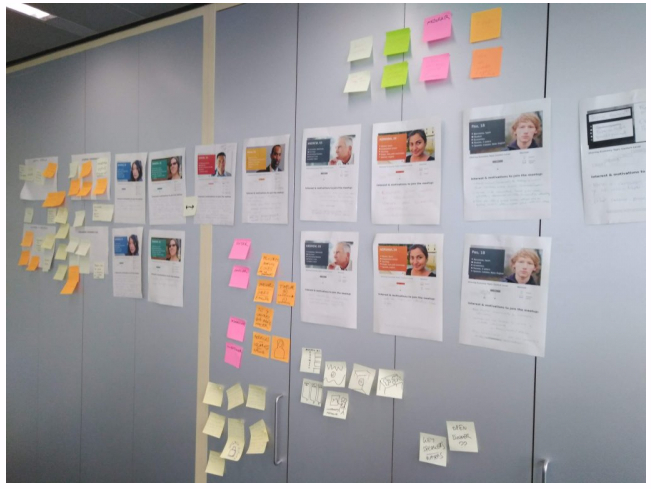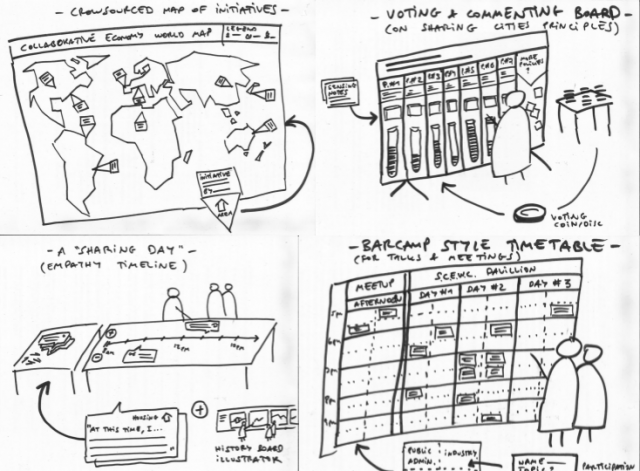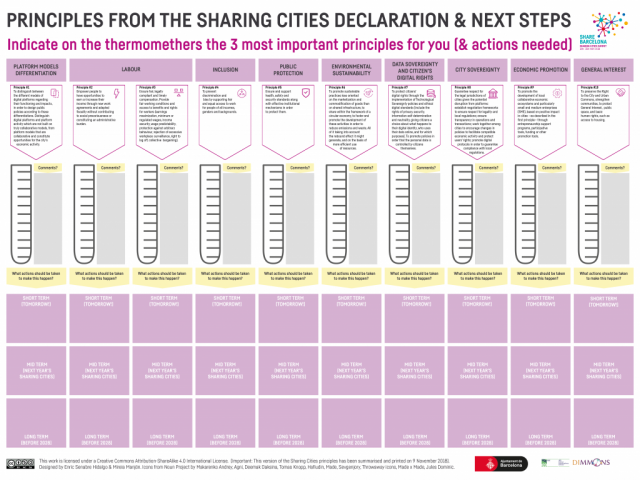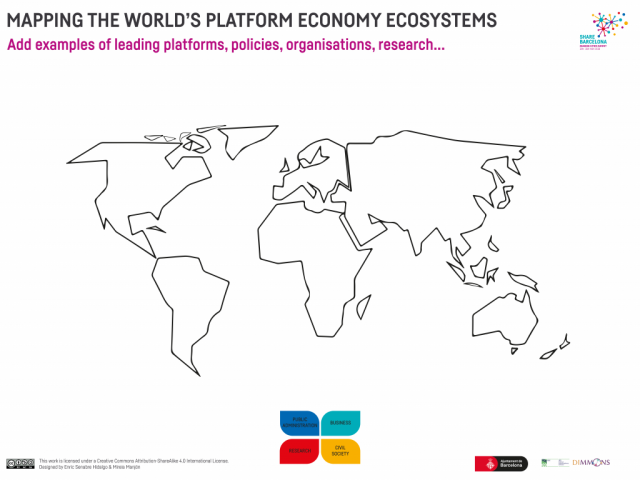Post originally published in the Sharing Cities webpage on 17/12/2018.
This post reflects the elaboration process of a series of co-creation materials recently developed from Dimmons, with help and inputs from different people, aiming at a new co-creation strategy for the event Sharing Cities Barcelona that just took place some days ago. The focus here is mainly on the different stages of a series of iterations and discussions which lead to a first operative version of three big scale canvas, produced in collaboration between Dimmons and Barcelona City Council. Those were used for the Meet Up of the Sharing Cities Summit, and afterwards during three days as a display at our Agora Space at the Smart City Expo World Congress.

Co-creation open source materials
In parallel to the diverse and important outputs of Sharing Cities 2018 (related to the current challenges and opportunities for cities in front of the platform economy), these new co-creation materials are free for download under a Creative Commons BY 4.0 license (just credit our work, and ideally let us know if you adapt or reuse them):
In case you can’t see the image, follow this link for downloading the materials.
The material above consists of (1) Canvas for feedback on policy proposals, by dotmocracy and short, mid and long term action points; (2) Canvas & (3) cards for mapping initiatives of platform economy worldwide, from a 4th helix ecosystem perspective: public administration, business, research and civil society; Canvas (4) & cards (5) for imagining a day in the future of platform economy (2028), with focus on areas of mobility, housing, leisure, communication, knowledge, education, food, energy, health, gender, shopping, finance, relations and care.
All three canvas should be printed at a 2 meter width x 1,5 meter height size. The two cards pages in DinA3 size (ready to cut).
Although there are still different areas of improvement for each of these co-design tools for research, and definitely the need to test and observe its use by more participants, all three materials seem a good “work in progress”, according to the extent to which it was used during Sharing Cities with hundreds of people. They provided a good amount of information and networking conversations (as we describe below, the main two goals for its design).
Elaboration process
Here’s a short summary of the elaboration process of the co-creation canvases:
1) Specific co-design session based on personas and user stories
In order to decide which approach and outputs we would need for the summit, considering the diversity of participants and the importance of these materials for key moments of the event, Dimmons organised a meeting with some people with experience and interesting perspectives in co-design and participation.
In a short brainstorming session with partners from Dimmons, Barcelona City Council, BarCola, Ideas for Change and OuiShare Barcelona, we started with an identification of key actors around the concept of the Quadruple helix of innovation (public administration, research institutions, industry and also civil society representatives), which lead to a first discussion of the main objectives that the co-creation process should address. This connected with a deeper identification of needs, interests and profiles of potential “users” of the Sharing Cities summit, which we visualized and completed in another interaction following the user experience concepts of persona (and adapting existing templates from the Wikimedia Foundation, available under a Creative Commons license).

The two main takeaways from that session were: first, the importance of not only generating materials for networking, but also for a collaborative identification of interesting examples and issues around the platform economy, and secondly the need of a visual, immediate feedback on the different principles being discussed previously in the summit meeting between representatives from different cities around the world.
2) First sketches for feedback and discarding options
Following that previous stage of “divergence” (where the discussion lead to several possible co-creation materials and approaches to develop) we developed a series of sketches of the type of interaction we were imagining in each case. At that stage, some potential ideas were discarded by the core team of the event organisation, due to its complexity or to the need to make sure that there was just the right volume of co-creation options (and not too many interactions to pay attention to, given the other elements of the event in parallel, such talks, catering, etc).

It was also the moment to decide which canvas will be presented vertically and which others horizontally on a table, inviting participants to interact in a more accessible and informal approach.
3) Editable wireframe for agreeing on content
Once there was a clearer idea of the space needed for the co-creation canvas and the rest of the event summit sessions, the next step implied a wireframe as editable version of each material, which could be tested in terms of dimension, sequence and copies for each text. It was at this stage when, for example, we identified the importance of not just commenting or “voting” by dotmocracy the different principles from the shared declaration, but the even more important aspect of participants suggesting action points in the short, mid and long term. This required a redistribution of the areas below each thermometer, among other things, and as usual the connection afterwards with discussions at different levels.

4) Final prototype applying usable design
Finally, in order to have a minimum viable version of the three canvas, as well as the cards to use on each of them (trying to avoid the over-presence of sticky notes or “dead by post-its” in these types of exercices), we generated the final designs for big-scale printed foams of 2 meters x 1,5 meters each. This represented another challenge in terms of planning and scale, where we identified for example on the last minute the need to make each canvas bigger in terms of height (initially they were 1 meter high only).


Our contribution to research innovation and transdisciplinary collaboration
Although there are several areas of improvement for these co-creation materials, we consider they can represent a good contribution to the field of research innovation and transdisciplinary collaboration. We invite other researchers, policy-makers, entrepreneurs etc. to download, adapt and make use of them, and specially to let us know in case of needing help or having feedback!
The different icons used for the materials are from The Noun Project, licensed under a Creative Commons license, by Eugen Belyakoff, Zoo, Shashank Singh, Sarah Joy, Monkik, Eucalyp, Viral faisalovers, Makarenko Andrey, Agni, Deemak Daksina, Tomas Knopp, Hafiudin, Made, Sevgenjory, Throwaway icons, Made x Made, Jules Dominic.